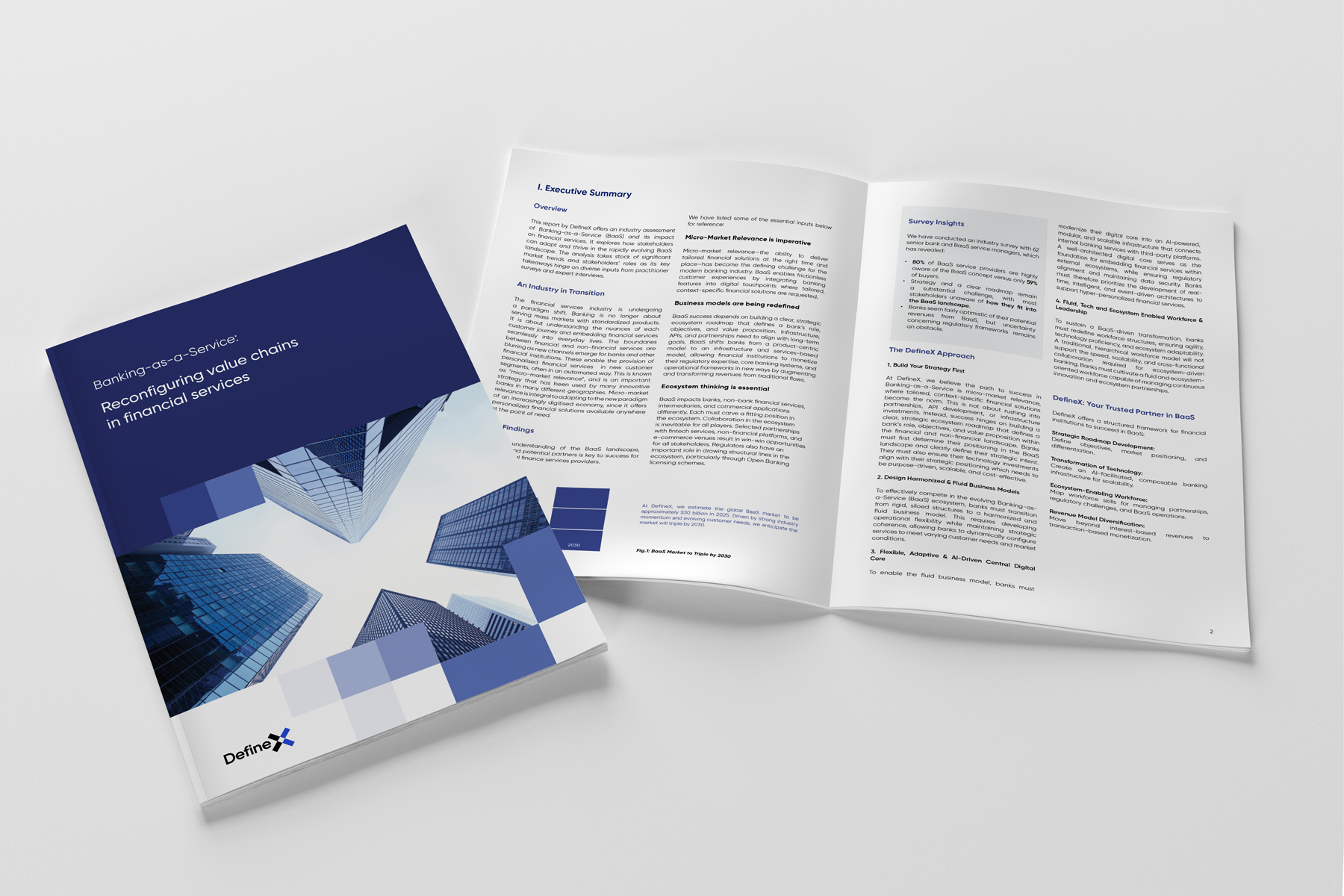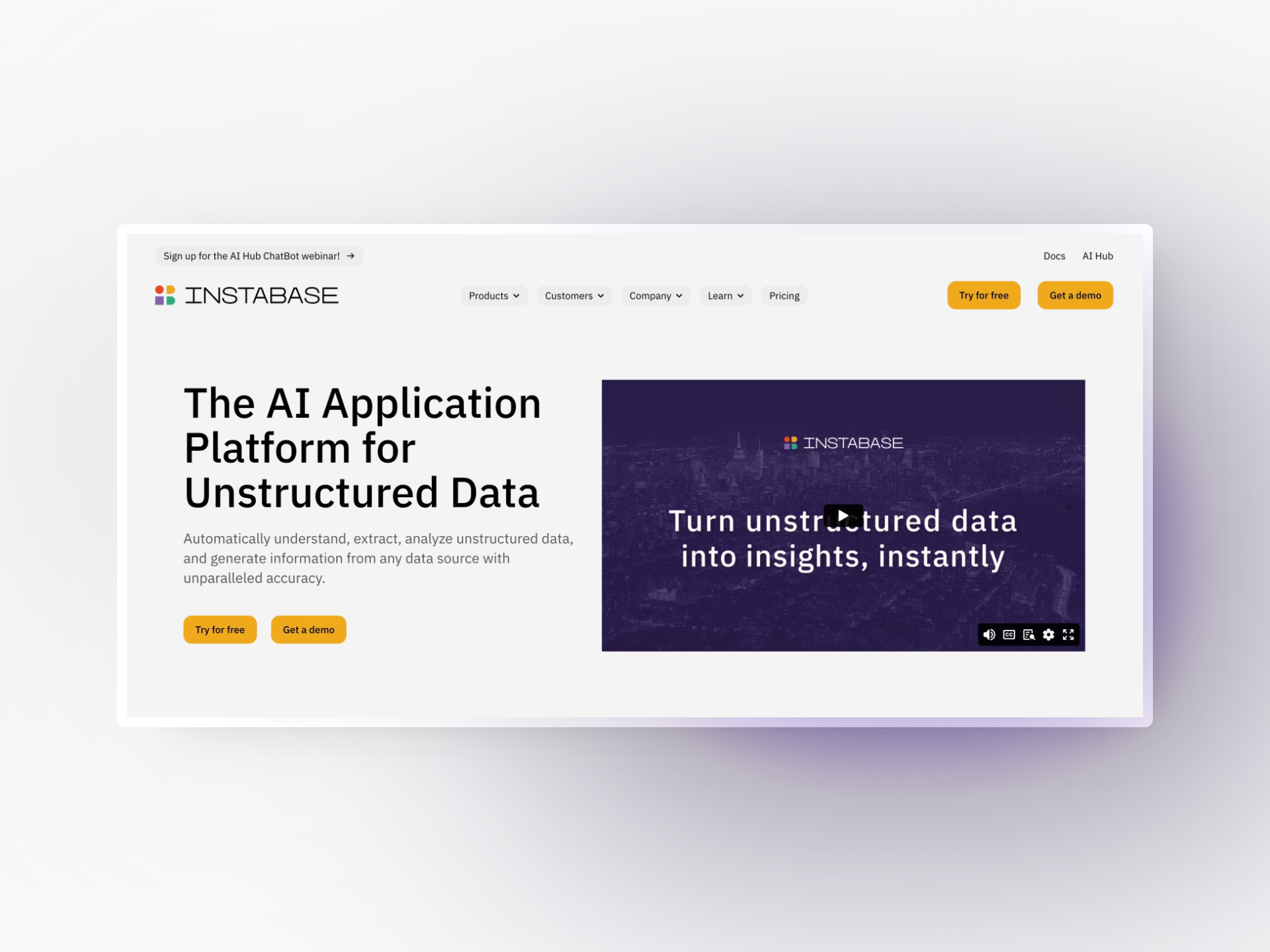 Financial Services
Financial Services
- Insights
- Financial Services
- Article
Unleashing the power of content: Transforming banking with a content house

Content has become even more important, especially in the banking industry, where customer expectations and intentions change rapidly on a daily basis. As Bill Gates famously said in 1996, “Content is the King”, still rings true today.
In today’s fast-paced digital age, content management, or as we call it at DefineX, the “Content House”, is a crucial aspect of the banking industry. Banks need to be able to manage their content efficiently to stay ahead of the competition and meet the needs of their customers. The ultimate goal is to establish a deep relationship with the customer and ensure long-term success and profitability.
By understanding customers’ needs, preferences, and pain points, companies can create products and services that truly resonate with them, leading to increased loyalty and repeat business. Studies have shown that emotionally connected banking customers with higher wallet share, and more product ownership lead to increased digital revenue, and a lifetime value nearly six times that of regular customers. As a result, organizations are being forced to develop an omnichannel content management strategy that creates personalized and consistent content-driven customer experiences across all channels.
At DefineX, we recognize the importance of Content House in the banking industry and how it can enhance the customer experience while improving operational and technological efficiencies.
Let’s start with what is not going exactly well.
While content generation is at the top of the list of issues that are not going well, there are four main areas that require attention:
- Inconsistent tone of voice across channels
Consistency in communication across channels is important for establishing an emotional connection with the customer. One of our key findings in our sales-first approach projects is the significance of maintaining a consistent tone of voice across all channels. The sales-first approach aims to benefit financial institutions by enhancing customer acquisition, increasing product adoption, and improving revenue growth and channel experience. For example, banks are adopting a more formal communication style for channels such as email and SMS, while using a more casual and friendly tone for push notifications, splash pages, or mobile app injections. While this approach is not necessarily wrong, it can lead to an inconsistent communication style, which may negatively impact the overall customer experience. Why this matters because banking is built on trust, and consistency in tone of voice plays a crucial role in establishing trust and reliability. What we see when we get to the root cause is the lack of content design guidelines that can be used by multiple teams involved in execution. - Lack of growth-focused content personalization
Personalized content that is relevant to customers’ needs and interests is known to significantly improve customer engagement and loyalty, which can lead to increased customer retention and revenue growth over time. But what we have observed in our various projects is that cross-sell offers and campaign contents are often generic, not specific to customer segments. Customer journeys are not designed according to the customer’s footprint in the bank. To give an example, today we all have multiple credit cards from various banks, each serving a specific purpose, and we spend from these cards in specific sectors. Meanwhile, banks strive to deepen their customer base through different campaigns, aiming to become the primary card of their customers. However, the mere quantity of campaigns does not determine success. What truly matters is how, when and through which channel these campaigns are presented to the customers. Hence, banks should analyze customer data and gain insights into customer behavior, preferences, and needs. This analysis encompasses transactional data, digital interactions, social media activity, and any other available data sources.To address this challenge, banks should prioritize analyzing the customer’s history with the bank and then redesign the journeys with their touchpoints, trigger events, and contact policy rules. This approach will enable banks to engage with their customers using personalized content while presenting the right offers at the right time. - Complexity of the content generation process
A well-defined content generation process is critical to ensuring that the right content is created and delivered to the right audience at the right time. By defining a content strategy and process, banks can align their content with their business goals and customer needs, improving engagement and conversion rates.Currently, the content generation processes are being carried out by different teams within the bank, each pursuing their own goals. However, this fragmented approach lacks a holistic perspective as teams are unaware of the content released by other business units. While the planning and content creation processes may run smoothly and streamlined, there is a risk of multiple teams producing similar content for the same target audience. This is primarily due to a lack of oversight and reporting, resulting in operational deficiencies. The absence of dedicated teams within each department creates disconnects in the content management process. For instance, during a project analysis, we discovered ongoing campaigns that were left unfinished. Although the relevant team initiated the campaign, the absence of performance monitoring and reporting resulted in the campaign continuing for the intended audience for three months. This had negative consequences for the bank in terms of financial loss and customer experience. While the planning and creation phases are relatively problem-free, the crucial aspect of monitoring and assessing performance, which ensures the effectiveness and sustainability of the content, is often overlooked.Moreover, a streamlined content generation process can help banks manage their resources more efficiently. By establishing clear roles and responsibilities, delegating tasks, and optimizing workflows, banks can reduce the time and effort required to create and distribute content, freeing up resources for other critical activities. However, banks have not yet overcome the multi-execution of tasks. The content generated by banks often involves multiple stakeholders, including product teams, compliance teams, legal teams, and marketing teams. Each team has its own priorities and requirements, which can lead to conflicts and delays in the content generation process. - Absence of a content repository
In the absence of a centralized repository, the content creation process becomes time-consuming and inefficient. Each time a new piece of content is needed, the team is forced to start from scratch, resulting in duplicated efforts and wasted resources. By implementing a content repository, banks can promote content reuse and repurposing. They can store and categorize content assets, making it easier to locate and reuse relevant information across different channels and campaigns.Without a content repository, team collaboration also becomes more challenging. Different departments within the bank, such as marketing, compliance, and legal, often need to work together on content creation and approval. In such cases, a centralized repository serves as a common platform for collaboration, providing features like version control, feedback mechanisms, and streamlined workflows. This helps to speed up the content creation process while ensuring that everyone is working with the latest content versions.A well-organized content repository also ensures that the right content is readily available to the right people at the right time, promoting efficiency, accuracy, and consistency across the organization. Despite its importance, some banks have yet to implement a content repository, mainly due to a lack of awareness of its benefits. For example, in some of our projects, we have encountered banks that were unable to access error and rejection messages sent to the customers because workflows were not stored in content repositories. So, what does this cause? It leads to poor enforcement of contact policy rules and a lack of knowledge about what communication has been made with which customer.
How we overcome these challenges with our Content House strategy?
Our Content House strategy is designed to address the challenges outlined above. It has three main pillars, as shown in Figure 1. The first pillar focuses on the content lifecycle management, which involves the management of content from its creation to its publishing across various channels, along with performance evaluation. The second one revolves around the operating model and governance of content creation, which includes defining roles and responsibilities and establishing clear processes for content creation and management. The last one is the enablement or optimization of CMS technology, which includes selecting the right tools and platforms for content generation and distribution. Let’s look at them in more detail.

Figure 1-Content House Framework
We start by defining the enablers…
Our framework enables organizations to streamline content operations through a unified platform that covers the stages of “Plan, Create, Execute, and Monitor” as shown in Figure 2. A key factor enabling this process is the development of “content guidelines” that are accessible to all stakeholders and serve as a blueprint for effective content creation.
The planning phase involves developing a content strategy that includes a compelling value proposition tailored to the target audience. This phase can be likened to laying the foundation of a construction project. Just as the foundation provides stability for the entire building, the design principles set the stage for the subsequent phases of content generation. With a solid foundation and robust content floors in place, the next step is to connect this building to the customer. This involves publishing the content on selected channels after conducting a thorough user analysis. Following these processes, it is essential to measure and report on the performance of the content to ensure deeper customer engagement. Monitoring customer response and relaying the findings to the relevant departments is crucial for maintaining and improving customer satisfaction.

Figure 2-Content Lifecycle Management
… than it is time to implement a good governance strategy,
As DefineX, we strongly recommend that banks implement a robust governance structure in banks to ensure the efficient and effective management of their content throughout its entire lifecycle. To achieve this, we establish designated content creators and auditors who will assume responsibility for content creation from planning to monitoring.
In terms of the competencies required for content lifecycle management, content creators should form a team within their respective business units and possess a strong understanding of content language, design, and communication. They must be held accountable for developing content-driven strategies and executing content generation processes to meet business objectives. Content auditors, on the other hand, should act as ambassadors to support and monitor the content management system. Their primary responsibility is to create content guidelines and provide performance evaluations to the content creators. This ensures consistent adherence to standards and enables valuable insights for continuous improvement.
and move to the enablement of a Content Management System
A content management system (CMS) plays a vital role for banks in effectively managing their digital content, such as sales or marketing offers for injection points in their mobile channel, website content, and marketing materials.
To start the process, conducting a thorough analysis is crucial to determine where to begin and which competencies to introduce within the bank. This analysis involves examining business requirements, operational considerations, and technical needs. It is essential to perform a detailed gap analysis based on the identified needs. Banks can look to industry benchmarks or create a customized list of opportunities tailored to their specific requirements. The key is to ensure that this strategy effectively addresses the bank’s pain points and aligns with its goals.
At this point, the question that banks need to consider is whether to build their own CMS with their existing technical competencies or opt for outsourcing. To make this decision, one of the key factors is to evaluate the existing technical competencies within the bank and determine if there are any in-house solutions or frameworks that can be leveraged for building the CMS. To illustrate this point, let’s take the example of A/B testing, which is a powerful feature for a CMS. We have observed that most banks perform A/B testing manually, and some banks even fail to conduct A/B testing even though they have Pega integration that provides A/B testing capabilities. Given that not all banks with Pega utilize every module, our primary recommendation is to assess the existing competencies.
However, it is equally important to establish a long-term vision by conducting a comprehensive analysis of bank’s current business and technology landscape. Why is this important? Because the competencies of banks vary widely, making it challenging to provide a one-size-fits-all solution. The next step is to allocate the necessary resources, including developers, designers, and project managers, to build the CMS. It is also advisable to assess the potential need for additional expertise or external support during the development process.
So, what are some of the outcomes of having a Content House strategy?
Implementing a content house strategy offers numerous benefits to banks, including consistency, personalization, efficiency, revenue growth, and robust technology. In a successful collaboration with a prominent bank, we conducted an in-depth analysis of their campaigns and offers, comparing responses against control days. This allowed us to determine the optimal timing for offering campaigns based on customer responses. As a result, we witnessed an impressive threefold increase in the number of conversions for certain product offers. This highlights the importance of continuously analyzing customer insights during ongoing campaigns and offers to maintain effective communication. Such achievements are only attainable through a robust operational model, which provides a framework for effectively managing processes, resources, and roles.
In other projects, we developed a strategy to reassess contact policies in digital channels, aiming to enhance the visibility of sales offers. Significant increases in sales and conversion rates were achieved by leveraging data. For example, we proposed the product offers within the given contact policy model on the splash page. By implementing this approach and tailoring the splash page to suit the offer, we witnessed a significant increase in positive responses, with an astonishing improvement of approximately 100 times, and nearly doubling sales conversions.
Additionally, we established a campaign dashboard that served as a platform for business units to monitor and take proactive actions based on campaign results. Our objective was to empower the bank with the flexibility to enhance card campaigns based on customer preferences and to regularly evaluate their performance. One of the significant advantages is the ability to enhance functionality by extracting valuable insights from the data analysis efforts conducted by the teams.
In summary, we would like to emphasize the need to re-evaluate the technical competencies within banks, question the existence of repositories in customer communications, and prioritize performance monitoring to determine the appropriate timing and offers to communicate with customers. By delivering more relevant experiences, banks can achieve higher conversion rates and increase customer lifetime value. Furthermore, restructuring the operating model will lead to improved operational efficiency. This is why we recommend a dynamic process of growth and transformation for every financial institution through their engagement with the content.

Explore deep-dive content to help you stay informed and up to date
 Financial Services
Financial Services
 Financial Services
Financial Services

